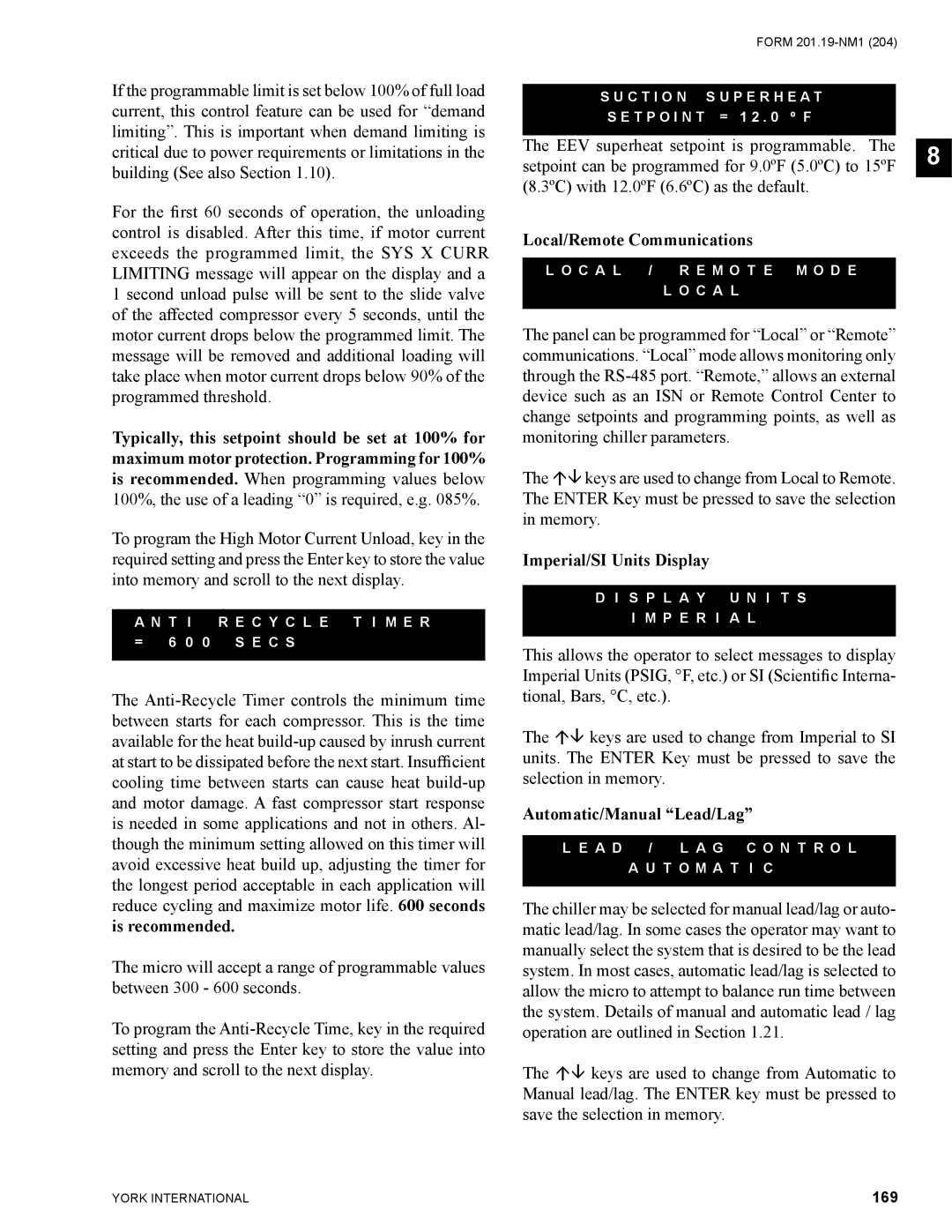
If the programmable limit is set below 100% of full load current, this control feature can be used for “demand limiting”. This is important when demand limiting is critical due to power requirements or limitations in the building (See also Section 1.10).
For the first 60 seconds of operation, the unloading control is disabled. After this time, if motor current exceeds the programmed limit, the SYS X CURR LIMITING message will appear on the display and a 1 second unload pulse will be sent to the slide valve of the affected compressor every 5 seconds, until the motor current drops below the programmed limit. The message will be removed and additional loading will take place when motor current drops below 90% of the programmed threshold.
Typically, this setpoint should be set at 100% for maximum motor protection. Programming for 100% is recommended. When programming values below 100%, the use of a leading “0” is required, e.g. 085%.
To program the High Motor Current Unload, key in the required setting and press the Enter key to store the value into memory and scroll to the next display.
|
|
| |
|
| ||
| A N T | I R E C Y C L E T I M E R |
|
| = 6 | 0 0 S E C S |
|
|
|
|
|
The
The micro will accept a range of programmable values between 300 - 600 seconds.
To program the
FORM
S U C T I O N S U P E R H E A T
S E T P O I N T = 1 2 . 0 º F
The EEV superheat setpoint is programmable. The setpoint can be programmed for 9.0ºF (5.0ºC) to 15ºF (8.3ºC) with 12.0ºF (6.6ºC) as the default.
Local/Remote Communications
L O C A L / R E M O T E M O D E
L O C A L
The panel can be programmed for “Local” or “Remote” communications. “Local” mode allows monitoring only through the
The keys are used to change from Local to Remote. The ENTER Key must be pressed to save the selection in memory.
Imperial/SI Units Display
D I S P L A Y U N I T S
I M P E R I A L
This allows the operator to select messages to display Imperial Units (PSIG, °F, etc.) or SI (Scientific Interna- tional, Bars, °C, etc.).
The keys are used to change from Imperial to SI units. The ENTER Key must be pressed to save the selection in memory.
Automatic/Manual “Lead/Lag”
L E A D / L A G C O N T R O L A U T O M A T I C
The chiller may be selected for manual lead/lag or auto- matic lead/lag. In some cases the operator may want to manually select the system that is desired to be the lead system. In most cases, automatic lead/lag is selected to allow the micro to attempt to balance run time between the system. Details of manual and automatic lead / lag operation are outlined in Section 1.21.
The keys are used to change from Automatic to Manual lead/lag. The ENTER key must be pressed to save the selection in memory.
8
YORK INTERNATIONAL | 169 |
